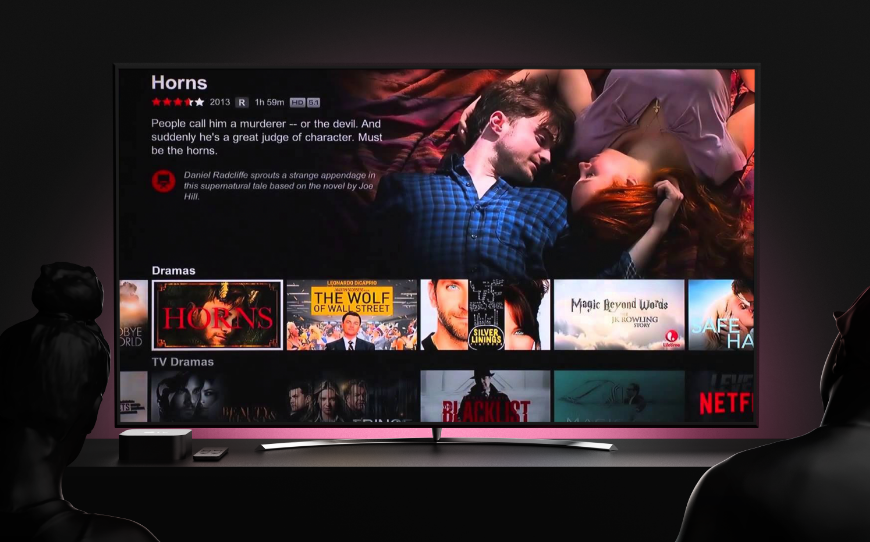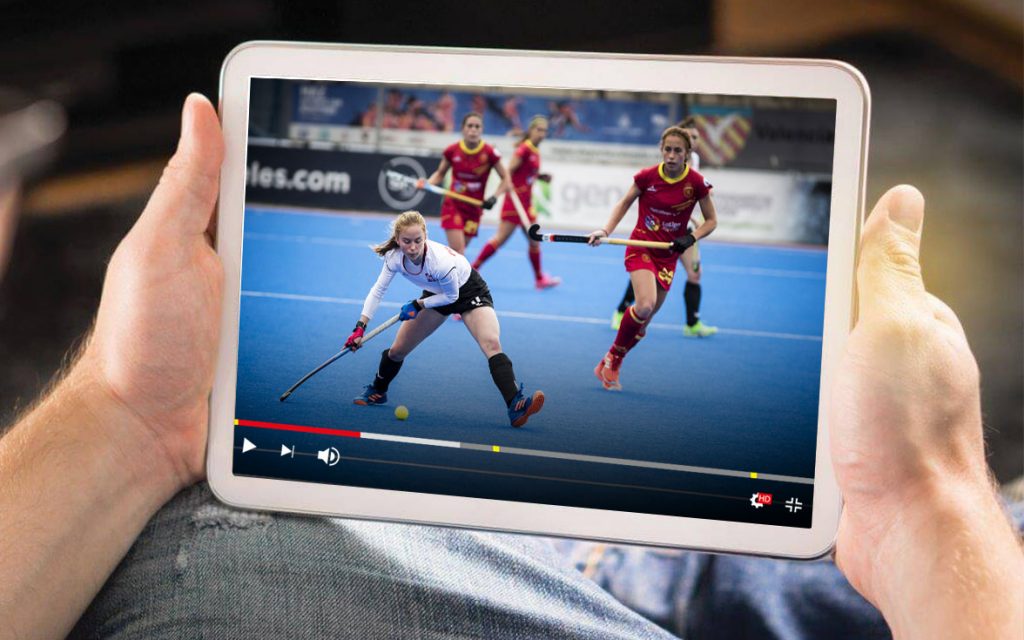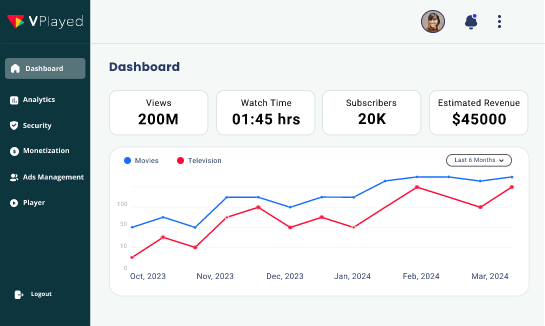Top 5 OTT Strategies To Improve Your Video Business in 2023

OTT, or over-the-top, is a term used to define video delivery over the internet a.k.a streaming. OTT media providers connect directly with the viewers by removing the “middle-man” i.e. the broadcast television and telecommunication platforms. With the advent of the OTT platform, the online video streaming and distribution markets have transformed.
The power of selection now resides with the consumer rather than with the distributor.
The OTT business model has changed from “finding customers” to “being found by customers”, which has led to a major shift in the marketing strategies implied by OTT service providers.
“(OTT) Revenue will grow from 6.1 billion U.S. dollars in 2010 to 83.4 million U.S. dollars in 2022.”
The OTT market is highly lucrative and prone to extensive growth in the future, but there’s also sufficient competition in this field to look forward to. There are a lot of players that are trying to reach the apex of this niche, leading to multiple marketing and content strategies being formed every day.
Table of Contents
How To Improve An OTT Video Business
The most important aspect of improving an OTT platform for it to actually reach people is a calculated and well-researched mix of strategies implemented to the right people at the right time. The current model for gaining traction on your OTT video platform is
Content + Audience + Distribution + Marketing + Monetization = Video Business Success.
A strategic and targeted approach to the aforementioned model is the key to gaining success in any OTT video business.
These strategies, while effective, need a unified marketing idea i.e. a Unique Selling Proposition (USP). Each and every aspect of the OTT video marketing strategies must be planned according to the USPs of the brand. USPs help differentiate the business from its competitors, thus answering the question
“Why should consumers spend time on your platform and not somewhere else?”
After the USPs are laid out, now comes the time for market research. The target market needs to be defined along with their behavior and preferences, which will form a target consumer profile. Creating strategies around the consumer profile is the best way to get traffic on your website and promote your OTT platform.
1. OTT Content Strategy

When it comes to online marketing, content is king. Content is the fundamental driving force behind most online businesses, especially OTT video businesses. Content can be anything from articles to videos to blogs to podcasts. Any multimedia asset belonging to a company is its content.
In 2018, about 57% of B2C marketers stated that they are planning to increase their content marketing spending in the following year.
The first step is to define a goal. Is the content used for driving traffic to the website or to promote something new? A definite goal enables a more focused approach and also helps keep track of the progress. The next step would be to build a Target Group (TG) for your business and for each and every product or service. The TG profile acts as a skeleton around which the entire OTT content strategy is built.
Content strategy helps in providing the audience reach via well-developed OTT Architecture. This is meticulously achieved via top OTT solution providers who furnish your audience viewing preferences.
The OTT video space is quite rich in market potential but delicate in its legal aspects. Online content is always prone to piracy and infringement and needs to be protected. OTT solutions like Vplayed are safeguarded by technologies like Data Rights Management (DRM), AES-256 Encryption, SSL Certification, and Paywall Integration. This multi-layered security eradicates any chance of third-party interference, copyright infringement, or content piracy.
On the flip side, ensure that the content broadcasted on the OTT platform is original and unique. Create new videos or touch base with content owners and secure rights to their original content. Doing so will bring exclusivity to the platform.
2. OTT Audience Strategy

Building upon and improving the Target Group (TG) profile is a recurring and essential part of any OTT strategy. Knowing customer behaviour on your VOD platform will enable you to service the customer better.
Here are a few questions that, when answered, can clarify the scalability potential of any OTT audience strategy.
- Is your TG active on cable, streaming, and social media platforms?
- Which TG segment has the most revenue potential?
- What is your TG’s preferred mode of media consumption?
- How can you drive your TG to newer platforms?
- How do you communicate with your loyal customers?
- Which content segment is getting the most views and by what kind of customers and why?
- Which TG segment is most likely to share content?
- Where are the TG watching the content?
- What are the initiatives to capture other potential TG segments?
- How do you project the change in your TG in the next 3 years?
These questions will not only help create a scalable OTT-business plan but also enhance customer loyalty.
Recommended Reading
3. OTT Distribution Strategy

There are numerous traditional and digital distribution channels that can aid in promoting OTT content. Before the internet, video distribution was in the hands of over-the-air broadcast networks, movie theatres, and cable networks. Using upgraded technology, video rental stores, VCRs and DVD players enabled a slight degree of time-shifting i.e. letting people watch media at their own leisure instead of being dependant on the cable networks.
When the internet arrived, it brought with it the opportunity to watch any video on demand. The customers now have full authority over what they want to watch and when they want to watch it, ushering the era of over-the-top advertising and entertainment.
- For a targeted approach, know the distribution channels your TG is active on and then strategically deliver content to create a strong distribution network.
- Create future projections about your TG through analytics data and market trends.
- Analyze distribution channels and their preferred media format. For eg., people on Facebook prefer short videos while YouTube viewers are used to relatively longer videos.
4. OTT Marketing Strategy

Marketing is all about promoting the content at the right place at the right time and in the right way. Marketing strategies take a lot of pre-planning but can provide very generous returns.
Some videos are easy to promote while others are relatively harder. This is the reason you need to have a solid marketing strategy for your OTT app development and video platform ready as soon as you launch a video. Each channel you use to promote content must require a different strategic outlook.
- Email Marketing
Emails are one of the most important tools in today’s world. An email is the easiest way to catch someone’s attention without much effort. Email marketing is usually good for offers and updates so the customer feels connected to the platform.
- Advertising
Albeit intrusive, proper advertising creates a big impact if done correctly. Online advertising mediums are everywhere: Facebook ads, YouTube ads, Google ads, etc. and each platform calls for a different format of ads. Mix it up and see which combination works the best for your OTT platform.
- Social Media
Social media is one of the best ways to organically build followers and connect with consumers directly on a personal level. Social media is also an excellent way of building backlinks to your website which will improve the overall SEO strength of your OTT platform.
- Launch Campaigns
Run online and offline campaigns by integrating social media and OTT advertising strategies to reach more audience base than your actual marketing. Brand building using offline marketing creates impact whereas online presence brings up a huge impact on your brand. Run multiple campaigns on different platforms.
- Custom Creatives
With high-quality video content, it’s possible to transmit messages to individual audience bases in the form of OTT videos directly from your OTT platform to drive better user interaction. Customize the marketing strategy and materials to target a specific user base.
- Engage the Audience
Keep the momentum going. Drive the audience base and engage them with multiple numbers of engagement tools like creating channels, creating polls, Q&A sessions while broadcasting OTT content. Empower users to stay proactive on your OTT platform with these engagement tools.
- Budgeting Options
Irrespective of VOD business or industry size, OTT advertising has its own traits to deliver high revenue on investment with limited budgeting plans. Understand the platforms, track views, targeted users’ environment, and minimize the expenses on advertising.
- Tracking Analytics
Measuring the analytics and taking appropriate action is half the success you yield. It’s significant that you measure the performance, impressions, targeted clicks, and more of your OTT advertising. Most of the top OTT platform provide valuable tools to track the performance of your OTT advertisement. Enterprise OTT platforms provide all the tools to track down every key factor like conversions, sales, and the ratio of your entire marketing budget.
5. OTT Monetization Strategy

Authentication of streaming content over television channels has a great spotlight. Enable customers the ability to access broadcasting, live streaming, or video-on-demand content from their channels through internet-based services.
At the end of the day, after all the efforts, every business needs to make money. There are three OTT monetization models used by video business owners:
- SVOD (Subscription Video-on-demand)
SVOD platform enables viewers to gain access to all the content on the OTT platform for a monthly subscription fee. The user has complete control in regards to when they want to start or stop the subscription.
- TVOD (Transactional Video-on-demand)
TVOD employs a pay-per-view concept i.e. consumers pay for exactly what they watch and nothing more. Each video has a relatively smaller price and the payment needs to be done every time the consumer wants to watch the video.
- AVOD (Advertising Video-on-demand)
What does AVOD mean – ad based video on demand the content is absolutely free for consumers. Instead, the advertising partners pay the platform for displaying their ads between videos.
- Hybrid Model
It’s a promising monetization factor for publishers and distributors where you deliver a mix of benefits to subscribers along with access to OTT content. Presenting hybrid models such as being able to access the content from any device, offers, and coupons to any specific content.
Conclusion
These strategies will immensely benefit starting an OTT business when implemented correctly at the right time and place. It takes time and patience to create and execute a successful strategy, so even if you feel like you’re not getting your returns, wait for a while, analyze the weak points and find a way to fix them or work around them and you’ll have an enterprise-level OTT video business in no time.

